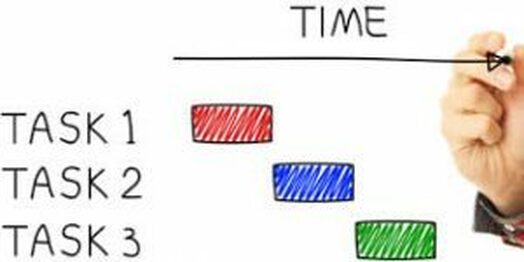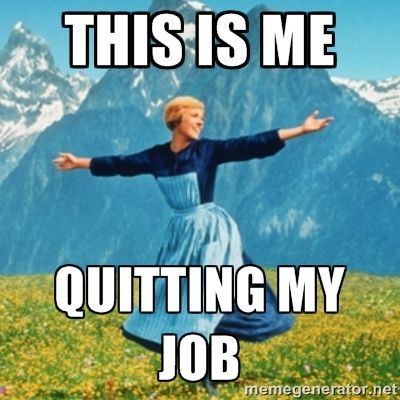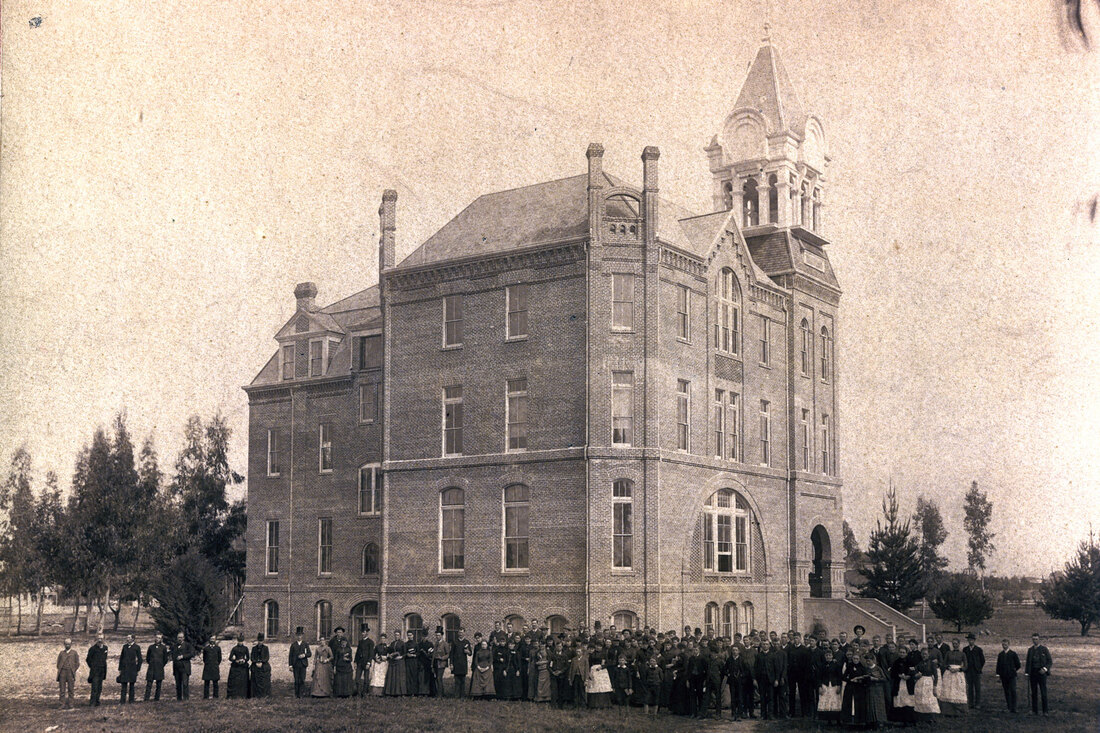|
The Gig Life – Our Economy Is Changing, Are You Changing With It?
Things are changing all around us and it’s happening at lightening speed. The workplace, as many of us know it, has been going through a facelift. A facelift commonly referred to as ‘the gig economy’ and despite California’s attempt to curb it via Assembly Bill 5 (AB5) it’s moving forward at the speed of light. Approximately 10% of the US workforce can be classified as a gig, and it’s growing exponentially. What is the Gig Economy anyways? It’s an alternative work approach in which temporary positions are common and organizations contract with independent workers or consulting firms for short-term engagements. You may be saying, “this doesn’t sound new, so what’s the deal?” While using temporary labor may not be a new thing, what is very new is the amount of work that is now being facilitated through Gig’s on short-term engagements. (AKA freelance, independent contractors, contingent workers, temporary workers, etc.) Gig freelancing is taking a much wider foothold in our economy. Today it’s common to find all sorts of work being packaged and facilitated through Gigs whereas before these jobs were considered only as fully employed roles. Management roles, engineering, software, events, cooking, the music industry, professional coaching and even academics are a few examples of work which is now being performed largely by the current day Gig worker. It could also mean you and I having a separate part-time job which we use to bring in extra income on the side. (AKA moonlighting) For example, there are companies and people who do nothing but provide short term support for other companies which have a need for an interim CEO. There are just as many options for companies who want additional support in doing their product design but don’t want to hire a full time employee because it’s work that is intermittent. These are examples of where Gigs come into play. They serve a role for a period of time on behalf of a separate organization. Once they’re done they’re off to finding their next opportunity, often times they may have multiple jobs/ projects going on at the same time. Why are companies and people alike moving in this direction? As our economy and technology continues to evolve we become less and less reliant on doing business face to face. For those of us who grew up in business when you were expected to be in the office for no other reason than ‘face-time’ you should be happy to know that many companies are moving away from this model. Why? We’re learning, slowly but surely, that ‘face-time’ isn’t productive. Employees can be just as productive from home, at a coffee shop or at the local water hole (not that I recommend that) rather than being shackled to their four foot cubicle for nine hours a day. Productivity soars thanks to the usage of Gigs because it offers people the ability to do work and do so on their own accord. We often hear people who are Gig’s say they “like working this way because it’s more creative, allows for a better work/ life balance and gives them the ability to choose the work they want to do.” The benefit to the employer utilizing a Gig approach is they can reduce their overhead on costly brick and mortar facilities (estimated at $12k per employee per year) while having work completed by true experts in the field. Employers are also able to onboard new talent and off-board unneeded skills without the burden of employment taxes and paperwork. Why it is important for me to be aware of ‘The Gig Life’? The reason you should care about what is going on in the Gig Economy is because very soon we will all need to adjust to this new work style in order to remain competitive. Now I’ve got your attention! It’s time we gave some good introspective thought on how we do things at the workplace and whether or not that is the right way to do it. Perhaps your business, your department or your team could benefit from using Gigs to handle freelance work. Maybe in doing so you’ll be able to facilitate a wider volume of business which means more customers, more money and more margaritas on the beach in Acapulco. Maybe your employees are tired of seeing your face on the daily and could use a little R&R while working from home. Either way, it’s time we all jump on the wagon because whether we like it or not the Gig Economy is here to stay and it promises to only grow as time goes on.
0 Comments
The demand for consulting is up, way up!
The US consulting marketplace has grown consistently over the past decade. In the last three years, 2015-2018, consulting services have increased upwards of 25% bringing it to an estimated $68.5 billion U.S. dollars. Demand is up and so is the desire from the US workforce to provide the service. Whether you’re new to consulting hoping to dive in to get a piece of the current demand for consulting services, or you’ve been consulting for years, you’ve inevitably been challenged with the thought… “How should I charge for my services?” Here we’ll give into a quick and straightforward guide for establishing your consulting fees and the things which need to be taken into consideration before settling on your pricing approach. #1: Research the local marketplace – it is imperative you understand what the marketplace yields for the consulting services you plan to offer this way you have an understanding of how you fit in with your competitors and their respective offerings. Best way to obtain this information is to ask others in the business, attend events and get quotes from others in similar lines of work. While you always want to make sure you’re getting paid for what you’re worth, you also need to be cognizant of pricing yourself out of the game. For example, in Irvine, CA there is a large supply of people offering mechanical engineering design services. Baring any unique or niche expertise the average mechanical engineer consultant charges anywhere from $50-80/hr. If you’re charging $125/hr for similar services you may find yourself missing out on projects with potential clients because the end user, or client, has too many other reliable and capable consultant options to choose from at rates cheaper than your offering. #2: Fixed cost vs. time & materials – you’ll need to decide up front what type of pricing strategy you’re going to use. Fixed cost is when you charge a flat fee or a ‘not to exceed’ fee for work you’re performing regardless of the amount of hours it takes you to get the job done. Time & materials pricing structures price based on the amount of hours it takes to complete the job. Read more HERE. #3: Long game mindset – your pricing should reflect both your experience, capabilities but also your willingness to get repeat business from your clients. If your rate is higher than the average marketplace rate for similar service you may still be able to get work, however you may find the client doesn’t pick you for additional work or longer projects. Remember, the higher your rate the higher the clients expectations will be on your performance and the further scrutiny you will receive on your work output. #4: Know your profit margin – it’s important you understand what potential profit you stand to make for each project. Profit is what keeps you growing and stable long term. If you’re constantly breaking even you leave yourself at risk for unexpected downturns and other things out of your control. Establish an ideal profit margin per project you want to achieve and incorporate that into your pricing. Learn how to establish a profit margin HERE. #5: Flexibility is key – clients like working with consultants that are flexible; if you’re too rigid with your pricing you may find you’ll lose out on opportunities in the long run. Try pricing your work based on the difficulty of completing the task. Perhaps you have a minimum threshold you’re going to charge per hour (say $100/hr) and then based on the work you’re potentially taking on you will scale your price upwards by 25%. It’s not uncommon for consultants to have a pricing menu based on the range of their capabilities and difficulty to perform the work at hand. We suggest not using a ‘one size fits all approach’ for pricing your services. #6: Know what you need – while you should never price your consulting practice based on your personal lifestyle (clients don’t care how big your house is, what car you drive or what your bills are so they certainly aren’t going to pay you more just because your lifestyle requires it) it is important to know what you need to be charging in order to meet your personal financial obligations. Once you know this number go back to step #1 in this article to see if your pricing number is in line with the general market. Don’t charge more just because you need more to live. Clients can smell that from a mile away and it’s a big turn off. Key Takeaway: Pricing should be based solely on the value you provide. Your consulting price should have flexibility built into it while keeping in mind the difficulty of the work being performed. Ensure you know how the marketplace is operating and what others are charging for similar services so you can be competitive with your offering. Action Item: Meet 3-5 people in the consulting space which is similar in nature to yours. Learn about their offerings, how they go about pricing their service and what challenges they’ve had with clients specific to pricing. The more you can learn from them ahead of your own efforts the better off you’ll be when it comes time to present your price in front of a potential customer. The gig economy is growing. Growing rapidly!
I recently stumbled upon a publication put out by MBO Partners on an annual basis which compares the state of our economy to the rise and decline of independent workers. It’s a fascinating read, especially with the growth of the gig economy rapidly changing the face of the employment landscape as we know it. MBO indicates 52% of the U.S. adult workforce within 5 years of 2019 will either be working or will have worked as an independent consultant or contractor. That’s huge! Literally half of those employed in the US in one form or another operates as an independent ‘gig’. Furthermore, it’s estimated that 90% of the US workforce says they would be open to the idea of freelancing or consulting. In one way or another that just about includes everyone in the workforce, or close to it. If almost everyone you and I know are, or are interested in being, a gig [consultant] it will only lead to one inevitable outcome. The gig space is going to start to getting highly competitive. Being a freelancer or consultant isn’t uncommon anymore. Long gone are the days where an individual branding themselves as such makes a unique statement which in turn gives that person a competitive advantage. We may not be there yet however rest assure that in the coming years the consulting, gig and freelance field will become much more congested with new players trying to take a piece of the pie. As such, it will be paramount for gigs to learn how to brand themselves accordingly to ensure they remain at the top of the pecking order. Branding is crucial! It’s more than adding a tagline to your business card which creatively says in a couple words what you do. It’s more than building a LinkedIn profile hoping it does the work for you with a serene picture of a bamboo forest behind your mug shot. Branding, a crucial part to any business, is indeed the next wave of importance for the consulting and gig community. What does branding do? Branding does a lot of things. For starters, it helps to build an identify, one people begin to learn over time is synonymous with you. Branding is all about strategic messaging to an audience about who you are, what you’re all about, and how you make a difference. When branding is done right, it can take on a life of its own, far beyond the company, product and original intent. Take for example the Q-Tip. The handy little cotton based product invented in 1923 by Leo Gerstenzang allows us the delightful pleasure to clean the crap out of our ears, keeping them nice and tidy to prevent health related issues and even perhaps hear better. What’s fascinating about Leo’s Q-Tip is that the word itself, ‘Q-Tip’, is a brand specific to one product now made by Unilever Corporation. The branding for this product has been done so well over the years that we all refer to every cotton swab based product as a Q-Tip, regardless of the manufacturer. This my friends is called an eponym. In fact, Unilever even has on their website “Q-TIPS® is a registered trademark of Unilever and is NOT a name for just any cotton swabs. The Q-TIPS® trademark can only be used to refer to the specific cotton swab products manufactured and sold by Unilever and should not be used to refer to cotton swab products of other companies or to cotton swabs generally.” Even Unilever is aware of how well their branding has done in the marketplace, giving credence to their competitors similar products. There are plenty of other products that fall into this category like Kleenex, Post-It Notes and Xerox. Branding creates buzz while giving recognition to a person, company or thing that people can recognize and associate with. It’s powerful stuff these marketing genius’ have dreamed up and we as consumers just love to eat it up. So here’s the rub and what this means you for, my wonderful Mrs./ Mr. Gig. It means you need to learn how to brand yourself asap, before the girl or guy next to you beats you to the punch causing you to become second fiddle in your own back yard. Don’t have experience marketing and or branding yourself? Want to learn? Here are the seven (7) steps to successfully brand yourself as a consultant (freelancer, gig, independent consultant, etc.) in no particular order: 1.Tell Your Story People work with people they like. This has been proven time and time again and I’ve seen it myself many times over throughout career. People also naturally gravitate towards a good story, especially if that story gives them a reason to ‘act’. Spend the time to think through and write out your story. This is the ‘WHY’ you’re a consultant in the first place. WHY you do what you do. What propels you to be you, the inner workings. Once you learn what this is write it down and develop a narrative that shares a story about who you are and why you do what you do. Once you have that done the next step is to share it with the world. 2.Know What Problems You Solve Customers don’t want benefits or values. They don’t want long winded sales presentations that promise them everything under the sun. Customers want solutions! Once you understand what your customers problems are, you can then create information which talks about your ‘WHY’, mentioned above, along with your ability to solve your customers problems. As you start to brand yourself via social media, print, publications, website, etc. make sure this is one of the first things your customers see. It’s all they care about – how you can solve their problems. 3.Consistency When you begin to brand yourself through the various avenues of social media, web, print, etc. it’s vital all of your information communicates the same message, look and feel. This consistency gets viewers accustom to your approach, look and feel. If every time you put something out in the world it looks completely different from one to the other you’ll never get people to connect to your product, service or company. They’re to busy being confused and lost in the process. Keep your message and content simple, yet highly directed to your intended audience. Consistency also refers to the amount you brand yourself. If you only do it once a month you’ll never get anywhere building a brand, however if you do one post, one article or one activity every day the results you’ll see are dramatically different. Just remember, it takes time, so invest in branding yourself now. 4.Speak Like Your Customers When you’re putting together content to put out in the world make sure you put yourself in your customers shoes. Think like them, act like them, be them. If you don’t know how to do that simply ask them. The more you communicate and speak like your customer the better chance you will have in getting their attention. If you’re trying to catch a whale, don’t pretend to be a shark. Instead, be plankton, that’s what whales eat. (I think) 5.Focus on the Solution When branding yourself and or your consulting practice focus on what results you create, provide or give. The journey along the way is of course important however in the consulting/ gig world its all about execution. If you can’t execute and successfully complete a project it doesn’t matter what you may have done along the way. Results are all that matter, brand yourself accordingly. 6.Create a Website I suppose this suggestion falls equally into the general marketing category however in this day and age if you want people to take you seriously having a website is a bare minimum. There are plenty of tools available to create cheap, or even free, template based websites that give any size business or person the ability to compete with the big girls and boys. Check out Weebly or Wiix. That said, keep the website simple and in line with your customers needs. Focus on your story and the problems you solve on behalf of your customers. Also, make sure you buy the online domain names of your consulting practice and any taglines you plan to use for branding purposes. 7.Create Visual Content No one’s saying you need to turn into a graphic designer, but it would help greatly if you could quickly edit and adjust images with your logo and brand to reflect your consulting work. This can be easily accomplished via Microsoft PowerPoint and Paint programs. One can buy stock photos online from dozens of pre-approved imagery galleries and edit them to your hearts content. PowerPoint is a relatively easy to use program to do basic image editing with text, enough to at least get some content out to the masses that is custom and specific to your target audience. Paint is a dumbed down version of PowerPoint, yet effective for small projects. Key Take Away: Don’t wait until your field gets over saturated before you start thinking about branding yourself and or consulting practice. The best way to brand yourself is to start with you, your reason for being a consultant in the first place, and then the problems you solve on behalf of your customers. Your branding should reflect all of this and be consistent across any platform you put it on - your website, social media, print media, publications, etc. Action Item: Does this sound like a lot of work you aren’t interested in getting involved in? If so, don’t feel bad, branding yourself is no easy task. Find a local marketing and branding expert and get help. Ask them to work with you to develop your brand, your approach and customer facing appearance. The money you spend upfront for this help will be well worth it down the road. If you aren’t in a position to pay for help, set aside 3 hours a week to dedicate to your branding efforts. It won’t be much in the beginning but at least it will get you on the road to ingraining this practice in your weekly operating rhythm. The side hustle always sounds enticing. Enticing because it’s fun, give us an opportunity to make extra dough on the side while doing new and hopefully cool work. Sound familiar? I hear this all the time when talking with colleagues. “I’m going to start consulting. You can make some really good money on the side.” The idea of consulting sounds fun because in our heads it is. Making money on the side doing what we love, of course that’s fun, yet we’re overlooking an important aspect of the ‘side hustle’ which often we don’t figure out until it’s too late. Working outside of your 8-5 job is in fact a means to make more money. It can also be a means to do other work and expand your skills, but before you you jump in you’ll need to think about one thing: How am I going to make money doing this? It happens all the time. We come up with a great idea, get excited and off we go chasing our idea as quickly as possible to bring it to life. Along the way we’re thinking about all the fun aspects of our new idea or venture except the most important – how am I going to make money doing this? Most people get into consulting (the side hustle, freelancing, moonlighting, gigging – it’s all the same) because we have a particular skill set and someone takes interest in it. For example, if I’m an electrical engineer and I’m really good at PCB (printed circuit board) design I can easily do this work for other people or companies on the side, often times without breaching any of my current employer policies. We jump into the side hustle with an immediate project. It almost seems easy. The work is just coming to us and all we’ve got to do is uphold our end of the bargain and finish the task to get paid. Inevitably we begin making the rounds to our other connections, picking up more projects that keep us going for a while. If we’re really lucky, we get busier than we could have imagined and as a result we take the leap into consulting full-time, leaving behind our 8-5 behind. We’re elated, encouraged and empowered all at once. Until reality sets in – what do we do once we’ve exhausted all our networks and connections and there’s no more work? Panic sets in and suddenly consulting begins to lose its enticing ways. It’s not fun anymore, this is a real job with a lot more responsibility than the 8-5 I was trying to get away from. Whether you’re doing the side hustle or you’re full-time in consulting it can be really frustrating, and potentially scary, when all the projects dry up leaving you to scrounge up the next job to stay afloat, while keeping the green backs coming in. Here in lies the key lesson with consulting and why it’s important we always think about how we’re going to get paid as consultants: Consultants work themselves out of jobs – it’s a natural part of the process! “Do this job”, “fix this thing”, “get us up and running here” our clients tell us, then once the work is done so are you as their consultant. Therefore, one of the most crucial aspects of being a long-term successful consultant, which often times gets overlooked, is how important it is for you to continuously sell yourself. When we are constantly in sales mode our project opportunities flow in more consistently rather than a rollercoaster where the work is plentiful at times (the rollercoaster high of consulting) or work is scarce and you’re eating Top Ramen three times a day (the rollercoaster lower – really low). For this reason it’s paramount we always keep top of mind ‘How will I make money as a consultant?’. The answer is ‘sales’! If you’re considering stepping into consulting, freelance or full-time, make sure you consider how you think and feel about doing sales. How do you feel about selling yourself and your capabilities? Reaching out to people you don’t know to sell them on the fact ‘you’re the person for the job’. Going to networking events in the evenings. Pitching people in senior leadership positions. Overcoming objections, etc. This is the foundation for sales. Sales isn’t for the faint of heart. It’s a grind and it’s all about the numbers. The more you do it and the more consistent you are the better off you’ll be in the long run, with opportunities aplenty. This doesn’t mean we need to forgo getting into consulting. It may just mean we need to slow down our excitement and think more strategically about what we’re about to go into and how we’re going to whether the storm should things get slow for a period of time. The answers to those two questions will provide valuable insight as to whether or not consulting is the right career path for you. Key Take Away: Before you start consulting, regardless if you are freelancing for full-time consulting, you should spent time thinking about these two questions: 1.How am I going to make money doing this? 2.Can I sell myself and do so consistently? Action Item: If you’re on the fence about how you feel with your abilities and interest with sales, go do a test run. Go to a networking event and go alone. At this event your sole purpose is to sell yourself. Go prepared with an idea of the ideal person you want to meet – the customer you would do work for. Find those people and start off with your introduction, your elevator pitch. Follow this up with an explanation of your specialty and how you help solve people’s business problems. (if you need more direction here go read the cliff notes version of the book ‘Spin Selling’ by Neil Rackham) While you’re in these conversations at the networking event try getting wildly curious with your questions to better understand the challenges and work the person you’re speaking with has in front of them and how potentially you could be the solution to their problem, aka pain points. Smart sales is less about selling yourself and more about listening and discovering areas you can help people. Note – this takes time to master and won’t happen overnight however while you’re at the event testing out your sales skills you will at least get an idea for how you feel about your interactions and the actual activity of selling. From here you can digest whether this is something you want to do further. Lastly, be realistic. More often than not you aren’t going to land a sale or consulting project off the first discussion with someone. Yes, it does happen from time to time however the more realistic outcome is it will take you anywhere from 5-7 interactions with a person or business before you land an opportunity. Interested in earning additional income? Looking to leave your full-time job to go it on your own? Maybe you just want to take on exciting, new work outside of your 8-5 job!
Join the Square-1 Engineering team for our morning coffee meet-ups to discuss the business of technical consulting, how to become a consultant and do so successfully on your own. https://www.sqr1services.com/consulting-and-coffee.html You’ve found yourself in consultant heaven having more clients and projects than you know what to do with. Like a dog chasing the car you’ve managed to catch the car (lot’s of projects to keep you busy) but don’t know what to do with it (how to deliver successfully) now that you have it.
If you have multiple projects, multiple clients and or just more work than you know what to do with consider these steps to improve your day and operating rhythm so you can focus on successfully delivering on your projects while keeping your happy customers: Communication Protocol – happy customers are informed customers. Customers don’t like to be treated like mushrooms – fed piles of crap while being kept in the dark. Establish a daily or weekly communications agenda which keeps you on track of your client updates and check-in’s. Consider creating a communication checklist via Microsoft Excel to help with consistency. (or see ‘Invest’ for tools to help with this) Invest – don’t be cheap. Make the investment in a project management tool which will help you stay on track with your projects while giving you a professional interface to use for customer presentations, etc. There are literally dozens of tools you can choose from like Asana, Jira, Microsoft Project, etc. When your work is structured, nice and tidy, your results will reflect it. Establish Customer Expectations – read this link on how to set customer expectations Get Organized – everything from your work space to how you spend your time should be constantly reviewed and altered to improve performance. Time management is key to your success, ability to deliver and to obtain more work. Find ways to reduce busy work, unnecessary check ins or onsite visits with clients. Sometimes visits are crucial and needed, but not always. When reviewing your actual project tasks create different to do lists/ project task lists for each client then merge them so you have one list broken down by all of your clients and required activities per day and week. (FYI – most project management tools do this for you while producing Gantt Charts which can be shared with customers – another reason to invest in technology.) Delegate – Undoubtedly there are aspects of your projects you just don’t like to do yourself. Do you know other people that can help you with some of your work? It pays off to have a small trusted group of allies, other consultants such as yourself, that you can bring in from time to time to help with various parts of the project. This allows you to focus on the work you enjoy most. Say No – one of the most powerful things any professional can do is to say ‘No’ to things or opportunities which don’t align with their key focus. This goes back to how we choose our time and where we spend it. We can’t be everything to everyone. If a customer makes a request that is outside of your capabilities kindly say ‘No’ then point them in the right direction to a possible solution elsewhere. #gogiver Key Take Away: Consider investing in a project management tool to streamline your work while having an organized infrastructure for your consulting business Action Item: Review all the projects you have concurrently and make a task and timeline list. Embedded those tasks into your week based on the deliverables then begin working towards fulfillment of those tasks. As a consultant [freelancer, gig, moonlighter, etc.] we work in the capacity of ‘work for hire’ whereas we go in, do a job and work ourselves out of the picture. Then it’s onto the next job, rinse and repeat. This can be a fun way to make dough while providing that good ole ‘work life balance’ so many people love to preach about.
Where consultants typically run into problems is the work they’re performing on behalf of the client or end user isn’t clearly defined or even in writing. As a result, it’s common for consultants to find themselves in sticky, even legal, situations they don’t know how to navigate. Keeping your nose out of legal issues or poor project results really comes down to ‘deliverables’, however before we get there it’s important we keep top of mind two maxims which are the cornerstones of a consultants life: Know what you can do vs what you shouldn’t (don’t try to be everything to everyone, stay in your lane doing good quality work you’re confident you can deliver) Remove the he said she said situation (both consultant and client should sign a Statement-of-Work, SOW, which clearly spells out responsibilities of each party, cost, duties within the project and their respective deadlines, these are referred to as ‘deliverables’, before the project starts) Establishing deliverables with a client can be tricky. It’s important both parties agree on the expectations of the work to be performed and the consultant can actually deliver the goods. Remember, the SOW is a legal document. If you over commit and under deliver you could find yourself in hot water. If you’re a consultant and are establishing deliverables on a project with a client make you keep the following in mind: 1. Can you deliver what the client expects and are those expectations realistic? 2. Challenge the customers’ expectations – does the customer understand what they want and does it match up with what they’re asking? 3. Communicate ahead of time – if you need help, are missing info or are at risk of missing a deadline, don’t wait till the very last minute to communicate. At the first point in which the issue arises inform your client of the situation and in the same conversation come prepared to offer a solution. Communication is key to successful project completion. 4. Focus on performing at a high level while delivering early, this will position you to be awarded more business in the future from said client Key Take Away: Get all work agreed upon in writing via an SOW and ensure you can actually deliver the goods. Communicate in the moment and often while focusing on delivering ahead of schedule with a high level of quality output. Action Item: Run a gap analysis on your existing projects to see if there are areas you may be at risk. Once you’ve identified those areas of risk on your current projects, come up with a viable solution to address it and proactively communicate with your client the situation and next steps. Ask for their buy in, then move forward. For the past 13 years I’ve worked exclusively supporting Orange County, CA ecosystem of growing gigs (aka consultants, freelancers, etc). It’s been a while ride to say the least with endless learning opportunities along the way!
During my time working with gigs and professionals alike I seem to find myself engaged in a variety of conversations having to do with professional guidance. I’m certainly no career counselor but have witnessed enough over the years to have noticed more than a few trends with the path and decision making an average career takes. One of the most consistent questions I get from people I’m interacting with is… “How can I become a consultant [gig]?” This question is interesting in of itself because the very statement overlooks a very important consideration: do we understand what the life of a full-time consultant is like? And just as important, can I keep my full-time job and do consulting (aka freelancing, moonlighting, etc) on the side? Lastly, why are you considering being a consultant in the first place? Before you start considering leaving your comfy desk job for the wild ride of becoming a career consultant spend time thinking about how you feel and perform with the following:
Key Take Away: Check yourself before you wreck yourself. (thanks Ice Cube for that insightful lyrical melody) Ice Cube was on to something here – before you jump into [consulting] spend time to learn about the life of a consultant and the realities that come with it. Action Item: Rather than leaving your day job, start your consulting experience by picking up a couple small jobs you can do on the side in the evenings or weekends. This will give you a chance to learn how to interact with clients, manage projects and your time. Do 3-4 projects then reassess those experiences, what you learned, how you performed and things to change for the future. Once you’ve done that you’ll have a better perspective of the life of a consultant and whether or not its right for you. The number one reason people opt out of entrepreneurship, which includes starting a business, being a solopreneur or even independent consultant, is fear. The wild west of entrepreneurship can come with a lot of unknowns as ambiguity and uncertainly is often synonymous with starting a business. It can be especially distressing for first time would-be-entrepreneurs to make the leap into small business as a result. The transitionary period from corporate life to entrepreneur, even the thought of this transitionary period, is marked with great concern and fear which keeps people from making the jump. For some it may be security at the current job, others it may be a lack of know-how in starting a business or simply a lack of self confidence in ones’ ability to make it on their own. Regardless of the reason, fear is a factor all potential and current entrepreneurs must overcome. I’ve found the best way to overcome fear is to confront it head on. Fear grips us all, regardless of occupation, experience, background or capabilities. The difference between the people who let fear own them versus those who use it as a tool to achieve comes down to two things: acknowledgement and action. Rather than worry, it’s important we address our fears and understand them. When we take the time to acknowledge our feelings and emotions it allows us to better process why we’re feeling this way, at which point we can begin to build a strategy for using those fears as a motivating force towards success. Taking action against our fears comes in the form of slowing down, identifying your feelings, understanding the situation and then planning accordingly. If time is on your side rest easy knowing that you can plan to be an entrepreneur first before you ever jump in the ring. Create an attack plan, identify potential challenges and solutions on how to deal with them. While you won’t be able to plan for everything taking a proactive approach to dealing with fear and using it as a tool perhaps may be enough for you to finally make the leap into the world of entrepreneurship. Key Take Away: Address your entrepreneurial fears head on, understand them and own it! Action Item: Use your newly addressed fears as a guiding force to plan your entrepreneurial transition into being your own business owner. Build alliances, or peer groups, with other business owners to help with the transition while learning from their experiences along the way. Interested in learning more about entrepreneurship and hearing stories from people who have made the leap into business ownership? Check out this event in Irvine, CA on 10/24/18: https://www.devicealliance.org/event/entrepreneur-event/ Can You Hack It As A Consultant?2/27/2018 For the past 13 years I’ve worked exclusively supporting Orange County, CA ecosystem of growing Gigs. It’s been a while ride to say the least with endless learning opportunities along the way! In August of 2016 I wrote on a similar topic of how Gigs are changing our economy. Interestingly enough my perspective was quite the understatement as Gigs have done more than just change it, they’ve revolutionized it! During my time working with Gigs and professionals alike I seem to find myself engaged in a variety of conversations having to do with professional guidance. I’m certainly no career counselor but have witnessed enough over the years to have noticed more than a few trends with the path and decision making an average career takes. One of the most consistent questions I get from people I’m interacting with is… “How should I go about transitioning to become a consultant [gig]?” This question is interesting in of itself because the very statement overlooks a very important consideration: do we understand what the life of a full-time consultant is like? As I’ve asked this question some have responded correctly, whereas many have fallen short. Not understanding what the life of a consultant is truly like doesn’t mean we’re a dunce, it just means we need more information before we can make an informed decision for ourselves. Before you start considering leaving your comfy desk job for the wild ride of becoming a career consultant, or gig, be sure you think about how you feel and perform with the following: 1. SALES – every consultant that is successful understands this #1 fact – if you are going to be a consultant working on your own you’ll need to be able to sell yourself and do so often. 2. NETWORKING – similar to sales, getting your name and service out there is paramount to customers finding out who you are and what you’re all about. Networking is crucial because it helps builds trust amongst new relationships while building a wider circle of influence. 3. RIDING the ROLLERCOASTER – The life of a consultant if full of ambiguity, ups and downs. One minute you’re deployed doing well then next minute you’ve worked yourself out of a job and are scrambling to find the next project. Also, it’s common for projects to not be fully scoped out as the customer expects the consultant to come in and tell them what to do. This inevitably leads to a certain amount of ambiguity and risk taking. The life of a consultant can certainly be exciting and equally fulfilling, especially if you’re seeking a change in your career. Once we know what we’re up against and how to be successful we stand a better chance of enjoying the ride along the way. Is the grass always greener on the other side? We quit our jobs with the idea of leaving for green pastures only to find out that the new job we just landed is just as bad if not worse than the last. Yikes! Why does this happen? Simply, we made a decision without fully understanding the ‘why’ behind it. When we’re at a point in our careers where we’re considering leaving our employer typically one or more of the following is happening:
Sound familiar? These are the top five answers people share on why they resigned from their employer. When we’re frustrated at work, especially if it has been going on a while, all too often we’re ready to jump ship without checking first if we have a life preserver on. The first opportunity that comes along meeting our ‘minimum qualifications’ can appear to be a god send. We yell out, “where have you been all my life” as we go through the interview process with our new prospective employer hoping they’ll give us the chance to say “Adios” to our current employer. But wait! How much research and investigation did we do ahead of time to ensure our hopeful new employer is better than the last? Does it meet our needs? Do we even know what our needs are? Here in lies the trap many of us fall into. We convince ourselves that what we have (our job or employer) is crap and anything else that presents itself is therefore exceptionally better than the last. We dive into the new opportunity to get away from the old to find ourselves quickly back into the same situation we were in before. How could this be? (it certainly isn’t our fault because it never is) Sorry to be the bearer of bad news – if you’ve experienced this it is indeed your fault. Now, let’s be fair, maybe no one ever taught you how to go about finding a new job and ensuring it met your needs. If that’s the case consider this first situation ‘my bad’ and moving forward use the following steps to better understand what you need and how to get it with a new job: Step #1: Self Reflection – take time to better understand where your unhappiness comes from. Without knowing this it will be very difficult to improve your situation Step #2: Honesty – are you giving your current job everything you can? If not then you’re putting yourself at risk of running from one issue to another, just at another company Step #3: List Your Expectations – write out a list of 5-10 things you want in a career and employer. Your top #1-3 should be non-negotiable no matter what Step #4: List of New Employers – if you’ve decided it’s time to move on build a list of companies in the area you want to work which meet your needs, at a minimum your non-negotiables. This information can be obtained by speaking with current employees of those companies or reading reviews online. Step #5: Network – this is the biggest misstep of all. Many times we don’t do this which means we aren’t getting a good enough perspective of what is going on within the industry we want to work in. Networking builds our connections and insight for businesses in the area we’re trying to find our next employment. It can also help us land a new gig. Step #6: Confirm Expectations – when you get to the point of interviewing with a new company make sure to ask them how they show up with the list of items you have created that are important to you. Ask every person you meet within the company. If their answers don’t jive with your expectations this isn’t the right company for you. Step #7: Show Up – if you do decide to take a new job with a company that meets your new set of expectations it is imperative that you show up and give them everything you’ve got. 150%. During this time you should also be making mental notes to see if your new employer is in fact upholding their commitments to your expectations. Caution – when you’re new it is a 50/50 split of responsibility where both parties have to come to the table to make the employer/ employee relationship work. Don’t just sit back and expect your new employer to drool all over you and praise you without you showing up in the new job accordingly. Praise, respect and opportunity are earned – never given for free. Unhappy at your job? Looking for a new one? Before you act on it make sure you understand why you’re in your present situation before you get into a new one. Once you know what you want it will be much easier to find the right opportunity rather than the first opportunity. About the AuthorTravis Smith is the founder and managing director of Square-1 Engineering, a medical device consulting firm, providing end to end engineering and compliance services. He successfully served the life sciences marketplace in SoCal for over 15 years and has been recognized as a ‘40 Under 40’ honoree by the Greater Irvine Chamber of Commerce as a top leader in Orange County, CA. Categories
All
Archives
April 2024
|
Visit Square-1's
|
|

















 RSS Feed
RSS Feed


